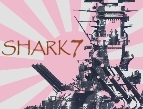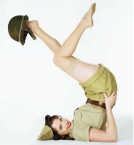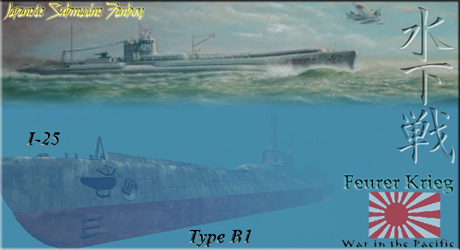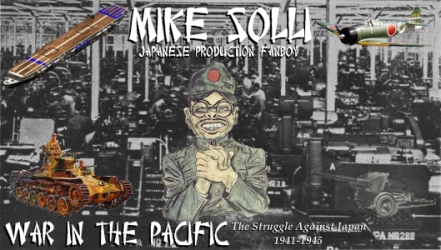Cuttlefish
Posts: 2454
Joined: 1/24/2007
From: Oregon, USA
Status: offline

|
November 8, 1944 (northern strike force)
Location: ?
Course: ?
Attached to: TF 27
Mission: Surface Combat
System Damage: ?
Float Damage: ?
Fires: ?
Fuel: ?
Orders: Engage enemy forces at Iwo Jima
---
The Japanese surface forces reach Iwo Jima late in the morning. The three task forces come in roughly in echelon, several miles apart from one another. In the lead and to the north is the Ise/Hyuga group, in the center is a heavy destroyer division consisting of two light cruisers and eight destroyers, and to the south is the Yamato/Musashi group.
The enemy forces left to protect the transports are numerous and powerful but they are not the best and newest ships in the Allied battle line. The new battleships and cruisers are all to the northwest with the carriers.
The approach of the Japanese ships is not detected until it is almost too late. It is not until the distinctive superstructures of the Japanese battleships appear on the horizon that the extent of the danger is realized. When it is, however, the Allied ships move decisively to meet them.
The closest heavy group to the northeast of Iwo Jima is based around battleships California and Oklahoma. Their assigned mission is to provide heavy fire support for the troops ashore; a surface action against an opponent of equal strength was not part of the plan. Nonetheless they move out promptly to intercept the closest of their attackers, which happens to be the northern Japanese force.
The action opens at long range. The two battleships on each side fire ranging shots as the distance closes to 20,000 meters and they continue to fire as they draw closer. The first hit of the battle goes to Oklahoma, which bounces a 14” shell harmlessly off of Ise’s forward turret. A few minutes later Ise retaliates with a more telling hit, a 14” shell directly into Oklahoma’s chart room. But the old battleship’s fire remains undiminished as the opponents close with one another.
When the range closes to 14,000 meters Tanaka, in command of the northern force, orders his ships to change course to the northwest. As this threatens to cross the Allied “T” the American commander orders a similar change a few minutes later. The range continues to close but more slowly and now all ships on both sides join the battle.
As the battle continues to develop the opposing battleships pair off. Ise tangles with California while Hyuga and Oklahoma exchange fire. All four battleships are aging but still far from frail; on the island itself both Japanese and American troops can now clearly hear the booming of their guns as crews on both sides load and fire as rapidly as possible.
Several U.S. destroyers sprint forward to execute a torpedo attack. The torpedoes miss but DD Cassin Young moves in on Hyuga, peppering the much larger ship with repeated 5” hits. Japanese heavy cruiser Nachi turns her guns on this new threat and several accurate 8” broadsides force Cassin Young to sheer off, her crew now battling raging fires.
Hyuga and Oklahoma pound each other with repeated hits. Ise does better; lucky early hits knock out California’s rangefinder and fire control director, forcing the battleship’s turrets to operate on independent control. While this is going on the Japanese destroyers execute a torpedo attack of their own. One hits California near the stern, bringing the battleship to a near halt. Ise moves in, pounding California with relentless and accurate fire. Her opponent is soon nearly helpless and on fire.
Other ships, destroyers and cruisers on both sides, have suffered hits but it soon becomes obvious that with California out of the battle things are turning against the Americans. They break off and try to regroup behind a smoke screen. For his part Tanaka lets them go. These are not the ships he has come to sink. He orders a course change back to the southwest, towards the island.
They do not go far before a new opponent presents itself. This is a surface group consisting of heavy cruisers Shropshire and Canberra, light cruisers Glasgow and Dauntless, and three destroyers. The heavy cruisers fight hard but the odds against them are too long; Canberra takes a torpedo and three 14” shell hits and is knocked out the battle, while Ise finds the range on Shropshire and scores repeated hits.
While this is going on, however, the Japanese suffer their first loss of the day. A 6” shell from Glasgow strikes destroyer Suzuki, causing a fire amidships. The blaze touches off some of the destroyer’s torpedoes and the resulting explosion tears the ship nearly in half. Suzuki sinks a short time later.
At 1220 Ise ceases fire, not out of charity but because main gun ammunition is growing low. It is too late for Shropshire in any event; the order to abandon ship is given soon afterwards.
The northern force, now minus Suzuki, breaks off and once again heads towards the island. Finally, at almost 1300 hours, the Japanese sight the objective they have come to destroy - a group of transports is almost dead ahead. They are already dispersing while their escort comes out to challenge the invaders.
The escort consists of light cruiser Richmond, supported by two destroyers and nine destroyer escorts. Ordinarily Tanaka’s ships would brush this force aside but right now they are like an exhausted runner approaching the finish line. Few of his ships have escaped damage and Hyuga is noticeably limping from her brutal clash with Oklahoma. All torpedoes have been expended and ammunition is growing low.
And the enemy ships fight with fanatical determination to save the transports. Richmond distinguishes herself this day; she fatally torpedoes light cruiser Kinu and her guns pound destroyer Makinami. The destroyer escorts, which have no business being in a fight like this, close in on the Japanese firing with everything they have. Richard M. Rowell puts two torpedoes into destroyer Onami; the Japanese ship goes down stern first less than ten minutes later.
Return fire from the battleships forces Richmond and the two destroyers to break off, damaged but still afloat. Seven of the nine destroyer escorts are crippled or sunk outright, and long-range Japanese fire sinks one transport and damages two others. Several hundred U.S. Marines are killed or injured.
It is little enough damage, but Tanaka has done all he can do. His ships are scattered and out of ammunition. He has lost Kinu and three destroyers and none of the remaining ships are in any condition to continue the fight. He orders his task force to turn back to the northeast, towards Tokyo.
In addition to the damage it has caused Tanaka’s attack has also accomplished something else, though he does not realize it at the time; it has pulled the much of the Allied defense to the north. There may still be a chance for the Japanese attack to succeed.
California sinks the following morning.
< Message edited by Cuttlefish -- 12/17/2008 10:07:13 PM >
|
 Printable Version
Printable Version






































 New Messages
New Messages No New Messages
No New Messages Hot Topic w/ New Messages
Hot Topic w/ New Messages Hot Topic w/o New Messages
Hot Topic w/o New Messages Locked w/ New Messages
Locked w/ New Messages Locked w/o New Messages
Locked w/o New Messages Post New Thread
Post New Thread